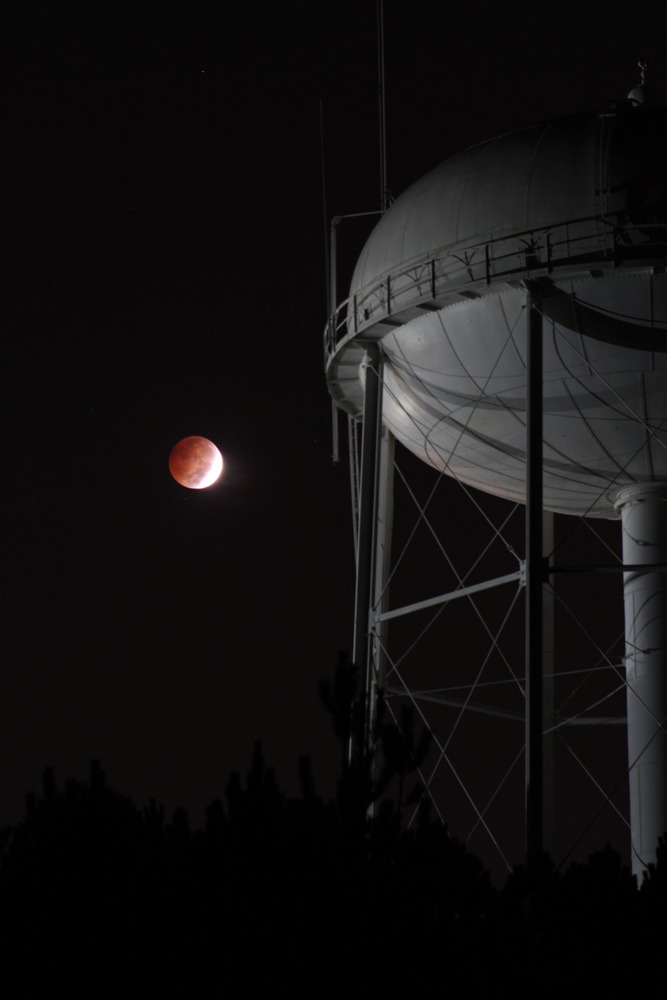Can't See the Supermoon Lunar Eclipse? Here's How to Watch It Online

A so-called "supermoon" full moon will pass through Earth's shadow in what promises to be a dazzling total lunar eclipse Sunday night (Sept. 27) for skywatchers with clear skies. But if Mother Nature ruins your weekend, don't fret. You can still catch the lunar sight online.
The last time there was a supermoon lunar eclipse, in 1982, moon observers had few, if any, options to watch the celestial event remotely. But today, a multitude online webcasts will ensure the lunar show goes on, rain or shine — filmed from observatories across the world and guided by expert narration from researchers, historians, meteorologists and astronomers. And if you miss it this time, you'll have to wait until 2033 to see the next such event, according NASA.
The most eye-catching lunar eclipse webcast promises to be from the online Slooh Community Observatory — and it will also be featured on Space.com. [Sunday's Supermoon Lunar Eclipse: When and How to See It]
Slooh webcast

Slooh's webcast will start at 8 p.m. EDT (midnight GMT) and will incorporate views of the eclipse from three different countries, according to a statement, including eclipsing harvest moon's rise over Stonehenge in England. You can watch the Slooh lunar eclipse webcast here, and also get access to archived night sky webcasts.
You can also watch the lunar eclipse webcast on Space.com, courtesy of Slooh. Viewers can ask questions on the eclipse via Twitter with the hashtag #SloohEclipse.
The webcast will feature weather reports from Scott Sutherland, of The Weather Network, and additional expert discussion of the science and history behind the lunar event. (They'll also discuss whether the "blood moon" really is a harbinger of the end times — the red color of the moon during an eclipse is caused by light refracting around the edges of Earth's atmosphere.)
NASA webcast
NASA, meanwhile, will host its own live stream on NASA TV at 8 p.m. EDT, which will run through "at least" 11:30 p.m. EDT (0330 Monday GMT), officials said in a statement. NASA's webcast will be broadcast live from Marshall Space Flight Center in Huntsville, Alabama, and will incorporate views of the eclipse from the Griffith Observatory in California and a discussion with NASA solar physicist Mitzi Adams, who will also answer questions on Twitter tagged with #AskNASA.
Get the Space.com Newsletter
Breaking space news, the latest updates on rocket launches, skywatching events and more!
Sky & Telescope webcast
The astronomy magazine Sky & Telescope is hosting a webcast as well, starting at 9 p.m. EDT (0100 Monday GMT). The magazine's hosts will bring in expert astrophotographers to give advice on how to photograph the eclipse. They'll also introduce a long list of special guests: Charles Wood, a lunar geologist; MIT geophysicist Maria Zuber, lead scientist for NASA's Gravity Recovery and Interior Laboratory (GRAIL) mission, which maps the moon's internal structure by measuring changes in its gravitational pull; space historian and author Andrew Chaikin; and Sky & Telescope senior editor Alan MacRobert.
Griffith Observatory webcast
The Griffith Observatory, whose views will be featured in NASA's video, will put up its own webcast of the event as well. Starting at 6:30 Pacific time, live from Los Angeles (9:30 p.m. EDT, or 0130 Monday GMT), the observatory will also invite guests to view the eclipse through binoculars and telescopes as they listen to live, moon-themed piano music from Steinway & Sons and the Los Angeles Philharmonic.
University of Arizona's SkyCenter live stream
In Arizona, the University of Arizona's SkyCenter observatory atop Mount Lemmon will feature an updating image of live telescope views on the SkyCenter website.
Virtual Telescope Project webcast
The Virtual Telescope Project, operating out of the Bellatrix Astronomical Observatory in Italy under the direction of atrophysicst Gianluca Masi, will aim its robotic telescopes at the supermoon for a webcast starting at 9 p.m. EDT (0100 Monday GMT). The production will feature astrophotographers from all around the world.
So, whether the sky is clear and the moon is bright, or conditions are murky, hazy or even in daylight, eager skywatchers will have a chance to watch and learn about the supermoon lunar eclipse with the help of online webcasts. It'll be the last time the events converge until 2033 — and who knows what technology will augment our viewing then!
Coca-Cola Space Science Center webcast
The Coca-Cola Space Science Center in Columbus, Georgia will host a live webcast of the lunar eclipse starting at 7:45 p.m. ET (2345 GMT). You can ask the questions on the lunar eclipse, as well as share photos, by emailing webcast@ccssc.org.
Editor's note: If you capture an amazing photo of the supermoon lunar eclipse and want to share it with Space.com for a story or gallery, send images and comments in to managing editor Tariq Malik at spacephotos@space.com.
Email Sarah Lewin at slewin@space.com or follow her @SarahExplains. Follow us @Spacedotcom, Facebook and Google+. Original article on Space.com.
Join our Space Forums to keep talking space on the latest missions, night sky and more! And if you have a news tip, correction or comment, let us know at: community@space.com.

Sarah Lewin started writing for Space.com in June of 2015 as a Staff Writer and became Associate Editor in 2019 . Her work has been featured by Scientific American, IEEE Spectrum, Quanta Magazine, Wired, The Scientist, Science Friday and WGBH's Inside NOVA. Sarah has an MA from NYU's Science, Health and Environmental Reporting Program and an AB in mathematics from Brown University. When not writing, reading or thinking about space, Sarah enjoys musical theatre and mathematical papercraft. She is currently Assistant News Editor at Scientific American. You can follow her on Twitter @SarahExplains.
